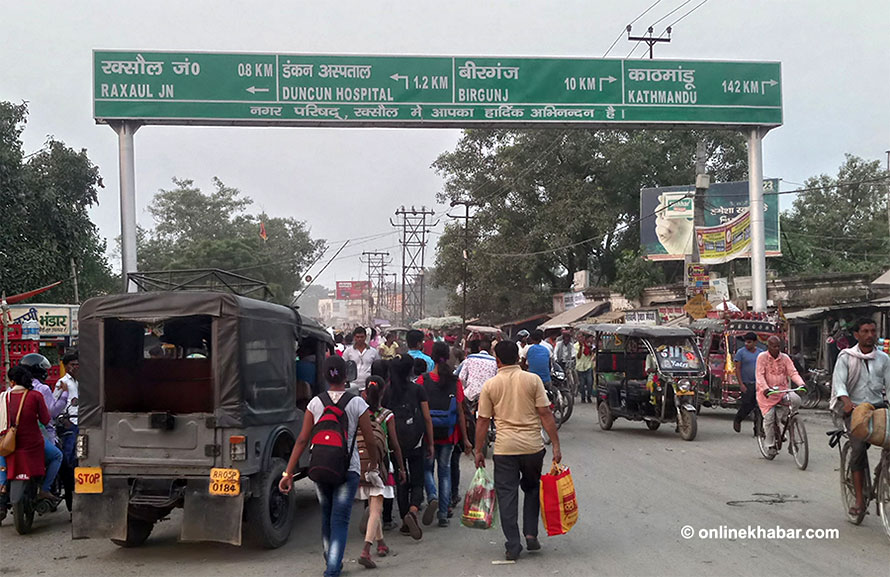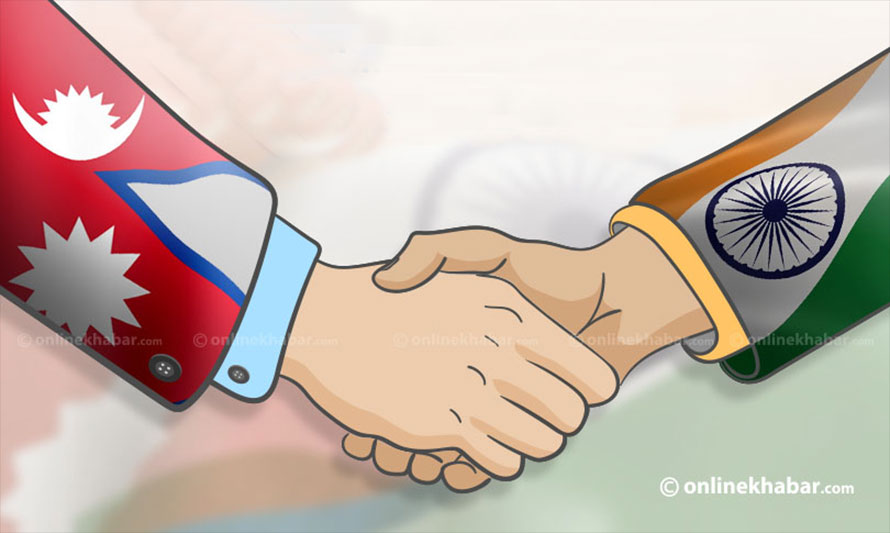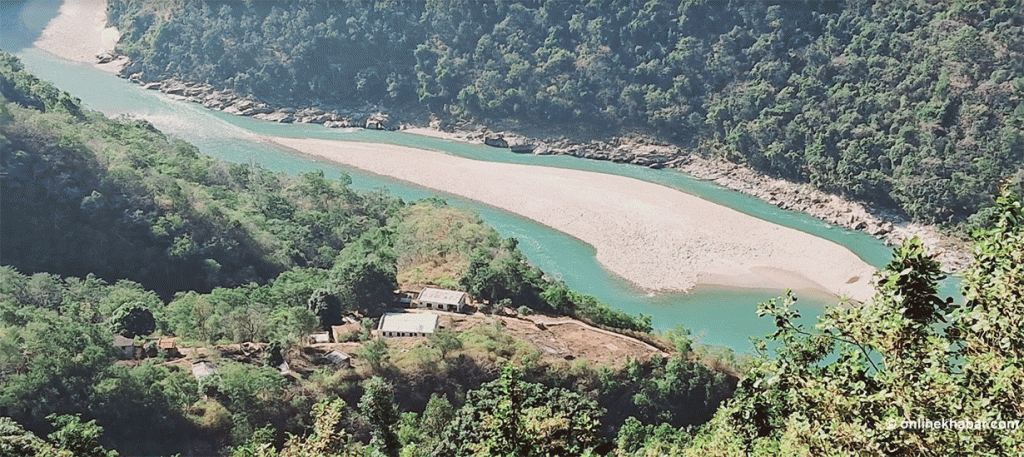
Anup Wadhawan is a distinguished professional with over 40 years of policy experience across various sectors. Over the course of his career, he has held prominent positions in civil service, regulation, academia, the private sector, and international development.
During his tenure as India’s Commerce Secretary from 2018 to 2021, Anup Wadhawan showcased expertise in foreign trade and investment. He also played pivotal roles in banking, insurance, pensions, and capital markets within the Indian government and private sector. Notably, he has made significant contributions to public utility reform during his service at the World Bank and African Development Banks. Wadhawan also possesses teaching experience in economics and public and development policy.
Currently, he serves as a visiting faculty at the Indian Institute of Public Policy and is an independent director of YUbi, a digital lending platform.
In a recent interview with Onlinekhabar in New Delhi, Anup Wadhawan shared his views on various aspects of Nepal-India trade, how the two countries can find a common ground and lessons Nepal can take from Vietnam.
Excerpts:
It is said that trade between the two countries should be mutually beneficial for its sustainability. India is Nepal’s largest trade partner, however, Nepal has a huge trade deficit with India. How do you analyse the reason behind it?
Certainly, for trade to be sustainable, it should be mutually beneficial. And if you look at trade theory, trade is almost always necessarily mutually beneficial. Both countries benefit from it. What makes trade controversial is that, while many economic agents benefit from trade, there are some entities who also are harmed. The import-competing industry in a country will be harmed when the trade opens up. The exporters will benefit when trade opens up.
Economic theory shows overall gains are there for the economy. But the people who loose-out, they have resentment; they are normally very vocal and sometimes they are able to convey the impression that trade is bad. Of course, governments must address their concerns through suitable safety nets and transition strategies, as they must address unfair trade practices adopted by trading partners.
As far as India and Nepal are concerned, their bilateral trade is mutually beneficial. The best example of that is that when trade was recently disrupted during the Covid pandemic, people realised how much consumer welfare and benefit was associated with trade. When the trade flows got disrupted, supply chains got disrupted, and then we realised how much we were benefiting from the free movement of goods and services.
Regarding the trade deficit between India and Nepal, these two economies are of different sizes. India is a much larger economy, and it is more diversified. Nepal is a smaller economy, not that diversified in comparison to India. To that extent, it is understandable that a trade deficit will be there for Nepal.
But, if you are talking about the trade between two countries, you should not just look at goods, you should also look at services.
Nepal is doing well in tourism. Many Indians are going to Nepal and spending money in Nepal. Not only from India, tourists from across the world are coming to Nepal.
Also, Nepal is receiving a lot of remittance income, which is also like a service provision income. Professionals from Nepal are going and working in India, earning wages there, or earning professional fees, and then repatriating those wages to Nepal. This is how Nepal is benefiting from the services trade. So, we have to look at things in totality.
The fact that India and Nepal have had largely free trade for so many centuries shows that ultimately it is sustainable and mutually beneficial. We shouldn’t be overly fixated on the goods trade deficit. We have to look at economic ties beyond goods trade.
What is your recommendation for Nepal to get optimal benefits from trade with India?
A recommendation for anyone, including Nepal, would be to create a business-friendly environment. You have to create an environment where investors find it easy to start a business, run a business, and grow a business. But unfortunately, we have not been able to do so. This is partly because our approval procedures and regulatory compliances are very onerous and difficult.
Also, our physical environment of business related to land, labour, logistics, infrastructure etc. is deficient. So we have to improve both the virtual environment of business in the approvals and compliance space, which creates ease of doing business by making it easy for people to get approvals and easy for people to comply with regulations when the business is running. At the same time also improves the physical environment, which means you take care of the availability of developed land, and the utilities such as power, water, and all the logistical linkages like railhead, and roadhead.
My answer is very simple. You can see the success stories of the recent times. When China started off, it developed Special Economic Zones (SEZs), which were as efficient as any in the world. In fact, more efficient and cost-effective than even in the West.
They are near the port. Raw materials or inputs would come to the factory within hours of landing at the port. By the end of the day, these were used up to produce/assemble the manufactured product, and the products were going out hours later by ship. When those Western investors realised how efficient these SEZs were, they went beyond assembly and ultimately shifted their component manufacturers there. That is how China developed and that is how Vietnam is developing.
You provided an example of Southeast Asian countries, highlighting their high level of regional integration. However, the South Asian region is notably less integrated, with limited business engagement among its nations. How do you analyze this lack of economic cooperation within the South Asian region?
The degree of integration has gone up tremendously over the years in the South Asian region. Of course, the integration is incomplete and deficient between some countries in the region due to political tensions. For instance, if you look at India and Pakistan, the trade was not anywhere near its potential and it is almost at a standstill today. The trade between these two countries is happening through Dubai or the other third countries.
Barring that, I think the integration has improved tremendously over the years. If you look at India-Nepal, India-Bangladesh and India-Bhutan, the trade integration has gone up tremendously. However, the trade between these countries has not reached its potential because all these countries have not reached their manufacturing potential.
Demand patterns are changing. People want cell phones, electronic goods, modern synthetic clothes etc. But, we have not been able to meet that demand locally. Now India has started making cell phones and the electronics and other industry is picking up. When this potential is realised across the region, trade will automatically go up.
Despite a series of negotiations between India and Nepal over the years for the revision of the trade treaty, it has been automatically renewed without any amendments. You were involved in these trade negotiations as well. Why do you think the two countries have been unable to reach a consensus on the matter?
To be honest, I am not fully aware of the current status of the negotiations and the discussion. My understanding is that the basic framework of the trade treaty is largely adequate. But, there are some perceptions about certain inadequacies and gaps on both sides. Nepal also has a perception of certain gaps that need to be filled and certain deficiencies that need to be bridged. The only thing I would like to say is that both sides should constructively work towards achieving that.
And let me also say that India, being the larger economy, should be in a good position to be willing to accommodate Nepal’s concerns. I’m sure that will happen.

Given India’s large-scale, cost-effective production of agricultural goods, Nepal has expressed concerns about providing reciprocal duty-free access to Indian primary agricultural items, citing the potential harm to Nepal’s agriculture. Do you find Nepal’s concern valid?
Certainly, if trade is causing a lot of distress, there are remedies available under bilateral and WTO rules. For instance, against import surges safeguard duties which can be imposed. And, if there are subsidies counter-vailing duties can be considered. And if there is dumping, which I’m sure there is not, then anti-dumping duties are available.
I can understand Nepal might have some concerns. But, ultimately, the best protection is to work towards competitiveness. I’m sure there will be some areas where Nepal will have a comparative advantage, such as in some crops. Nepal should focus on those and achieve a high level of competitiveness and become an exporter of these items and import other items. It enables you to specialise in these products as well.
And, ultimately, welfare comes from the consumption of goods and services. The moment you put barriers, number one- you are not going to allow your domestic economy to improve its efficiency because they are protected by a barrier. And, number two, you will stop the access of people to cheap and affordable goods and services. This again will lower welfare. So ultimately, erecting barriers is not the solution. The solution is to create competitiveness and Nepal should do this proactively. And, find out why Nepal is not at a potential level of competitiveness in the production of certain goods and target achieving that.
Instead of having protective barriers, to the extent domestic producers need some subsidies, providing subsidies is a better way of protecting farmers without harming the consumers.
India has supported various trade infrastructure projects, including Inland Check Posts (ICPs) at different land borders with Nepal. Despite a mutual laboratory recognition agreement, Nepali exporters currently face the inconvenience of travelling to provincial capitals in different Indian states for quarantine tests on perishable agricultural products. Do you believe it would be beneficial for India to assist in establishing quality labs at Nepal-India borders, particularly at ICPs?
Certainly, I would support that idea. Because advantages of trade are lost between two neighbouring countries if the approval and clearance procedures are cumbersome. Ideally, if you have mutual recognition agreements, you should recognise each other’s certifications and clearances. That means if Nepal is certifying something, it should ideally be accepted by India and vice versa.
To the extent, that there are some concerns which come to light on some products, the two countries can negotiate and find a solution to that issue. But, by and large, you should have a mutual recognition of each other’s certifications. And, to the extent, that some certifications are required to be obtained in the other country, it should be facilitated at the border.
I would certainly agree with the idea of building quality infrastructure, but sometimes there may be resource constraints or capacity constraints. In spite of the best intentions, you might sometimes have these difficulties coming. But, they should be addressed on priority.

India provides duty-free access to Nepali manufacturing goods if they undergo a value addition of 30 per cent in Nepal. However, Nepal has proposed reducing this requirement to 20 per cent, in accordance with WTO rules for the least developed countries. Despite this, India has not agreed to the proposed change. What are your thoughts on this matter?
I am sure, the concern of India would be that Nepali goods with low-value additions would create competitive pressure on domestic Indian producers. In my personal and private capacity, I would certainly recommend that some basis should be found to accommodate Nepal.
Nepal is an LDC and the very logic for extending concessions to Nepal relates to it actually leading to trade. And to the extent that to value addition norm is very high for Nepali producers to benefit, I think India should see how it can accommodate Nepali’s interest without causing any undue concerns for Indian manufacturers.
In many areas, India should be in a position to accommodate the Nepalia request for a 20 per cent value addition. If there is a concern regarding some products suitable safeguards can be retained to ensure that there is not any undue stress on Indian manufacturers.
While exact data is unavailable, it is suggested that informal trade between the two countries is as significant as formal trade. In your opinion, what measures could be taken by both countries to reduce informal trade and promote formal channels?
We have a long virtually open border and we have movement of people also who carry goods with them. So, certainly, there would be a significant amount of informal trade. And, the only way to reduce it is to make the formal channels less cumbersome. If the formal channels are open, duties are low, clearance procedures are simple to comply with then the informal channel will automatically come down. And to the extent we have unnecessary restrictions and prohibitions the informal channel will prosper. We have to be realistic. In an open border, if we prohibit something, it will happen informally. So, the best way to reduce informal trade is to make the formal channel easy to use.
Indian multinationals like ICT, Dabur, and Unilever are reaping substantial profits from their investments in Nepal. Unilever Nepal, for example, distributed a dividend of over 1,600 per cent this year. Despite being the largest recipient of Indian FDI, Nepal has not seen significant investments from Indian corporations. How do you analyse this?
My answer would be the same. If you create an investment environment that is investor-friendly, automatically you will find investors coming in. Just as Vietnam has created these enclaves of excellence, Nepal can think of such enclaves of excellence with good logistics linkages and good infrastructures. Nepal could promote investment areas like tourism, food processing, and agro-industry.
If the investors find a conducive environment then investment will certainly come because businesses are driven by profit motives and the potential for earning in developing countries is huge. I am sure just like Hindustan Lever succeeded, other businesses are also succeeding in Nepal.
Especially in areas like tourism, the sky is the limit. Because of global warming and climate change, life is becoming difficult in big cities. If you look at Himalayan Indian states, there is a huge inflow of tourists. There is no reason why they shouldn’t come to Nepal. But, all the ingredients have to be fulfilled, you have to create good facilities including low-cost air travel facilities.





















